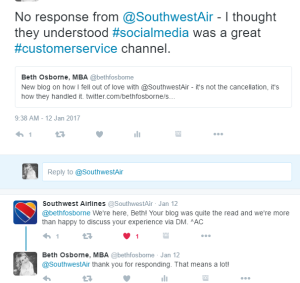
Listen, I know you want a lot of information on prospects that download your gated content. But some brands need a reality check on the value of their offer compared to the information requested. I saw an offer today on LinkedIn. The asset offer was for a research paper so I understand that it took time to create it. Analysis and conclusions take work to develop. But I’d be very curious to know what their bounce rate is for this landing page. I’m going to guess it’s high because these are the things they request on the form:
- First and last name
- Company name
- Phone
- Number of employees
- State
- Country
- Currently use their products
These are all required fields! If I had to put this piece of content in a buyer’s journey stage (haven’t read it, just inferring from the little information provided), I would say it’s either awareness or consideration. I lean a bit more toward awareness because the “value” of the research paper is to prove that doing X leads to Y. And Y is something a prospect would be happy about. In the awareness stage, it makes more sense to ask for less information. It’s the getting to know you phase. I recommend asking for name and email only. With a prospect opting into email, you have a channel to communicate and nurture the relationship by providing more content and eventually a decision stage offer of a consultation, price quote or demo.
I checked other platforms. The same offer is on Twitter and FaceBook; no distinction at all between the three posts (not even a hashtag on Twitter). I also know this is a global company with thousands of employees, and I would assume a healthy marketing department and budget.
I’m sure this is a very valuable asset, but the execution and promotion are off. Here is how I’d fix it:
Does the landing page practice good conversion-centered design? I’d say no. Here are some areas of improvement.
Context: Have they considered the context of where someone might be landing from? No. By posting on social media, it can be shared with people that don’t follow their brand. And those people have no context about who the brand is. Read more on context here.
Clarity: The posts for the asset say it’s a research paper and provide a name of someone who worked on it, but none of that is on the landing page. Also, if they are going to use someone’s name then they should tag the person so that people understand he or she is a credible source.
Congruence: This is big fail. Every element of the landing page should align with the goal. The goal is to get users to download the asset. Yet on the actual landing page there is one sentence and eight fields.
Closing: This principle focuses on getting the click. There are many elements on the page that influence conversions. This landing page has little context and requests a lot of information. Its call to action is simply “submit,” which is a negative word, at least subconsciously. There are many other positive words and phrases to use that can propel a user to convert.
In addition to the improvements need to align with conversion-centered design, their promotion strategy seems to be nonexistent. They should post it on social media based on the platform: FaceBook (visual), Twitter (use a hastag and tag the writer) and LinkedIn (longer post and tag writer).
So I guess you could say I’m silently critiquing your landing pages. If you’d like me to do it out loud, send me a note and let’s chat.









